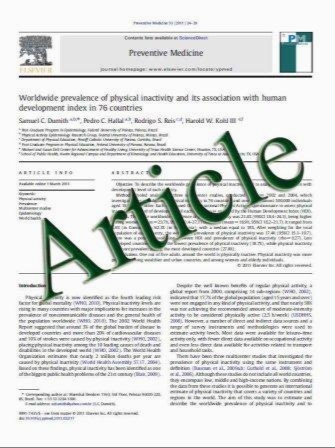Transcutaneous bilirubin nomogram for predicting neonatal hyperbilirubinemia in healthy term and late-preterm Chinese infants
- نوع فایل : کتاب
- زبان : انگلیسی
- مؤلف : Zhang-Bin Yu & Xiao-Yue Dong & Shu-Ping Han & Yu-Lin Chen & Yu-Fang Qiu & Li Sha & Qing Sun & Xi-Rong Guo
- چاپ و سال / کشور: 2011
Description
Identifying infants that will develop significant hyperbilirubinemia with the risk of kernicterus, and planning appropriate follow-up strategies, is particularly challenging. In this study, 36,921 transcutaneous bilirubin (TcB) measurements were obtained from 6,035 healthy neonates (gestational age .35 weeks and birth weight .2,000 g) between January 1 and December 31, 2009. All measurements were performed with the JM-103 bilirubinometer at designated times between 0 and 168 postnatal hours. TcB percentiles were calculated and used to develop an hour-specific nomogram. The rate of increase in TcB was higher during the first 72 h of age, after which levels declined to a plateau by 72.108 h of age. We constructed a TcB nomogram by using the 40th, 75th, and 95th percentile values of TcB for every 12 h of the studied interval. The 75th percentile curve of the nomogram may be an ideal cutoff point for intensive follow-up of the neonate for hyperbilirubinemia as it carries very high sensitivity (78.7%) and negative predictive value (98.5%). The specificity (45.7%) and positive predictive value (15.5%) decreased to reach their lowest levels at the 40th percentile. Of the neonates in the high-risk zone, 167 (48.8%) infants had persistent subsequent hyperbilirubinemia post-discharge, compared with 292 (27.0%) infants in the high-intermediate-risk zone at discharge. One-hundred and seventeen (5.5%) infants in the low-intermediate-risk zone moved into the high-risk zone during follow-up. No newborn infants in the low-risk zone became high-risk during follow-up. We provide an hourspecific TcB nomogramto predict neonatal hyperbilirubinemia in healthy term and late-preterm Chinese infants
Eur J Pediatr (2011) 170:185–191 Received: 2 June 2010 / Accepted: 17 August 2010 / Published online: 3 September 2010


